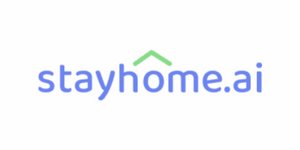- Working from home provides certain comforts, but is it the right choice going forward?
- Many organizations now feel that the ideal solution is a hybrid approach, with a mix of home-based and in-office work.
- Here’s why a hybrid approach provides the best all-round solution as we emerge from the pandemic.
This article has been written by Dragana Crnčević from stayhome.ai.
The pandemic has accelerated workplace trends and brought about a number of future scenarios much faster than we expected. During this time, there was a great deal of business and technological improvisation.
Working in densely populated spaces, be it a traditional office space or in a cafe with a laptop, was seen as a risk to health – and many people were sent to work from home as a result. While the initial adjustment period was challenging, there’s no denying that working from home provides certain freedoms and comforts you can’t get in an office.
For instance, you can choose the layout and decor of your space, along with your attire for the day. At home you can relax, put on your pajamas and work in comfort.
But is working from home the right choice going forward? Here we dig deeper into the concept of a hybrid workplace and discuss the pros and cons of working from home, and why a hybrid approach provides the best all-round solution.
Pros:
Better work life balance
Commuting to a central office every day can be exhausting, leaving workers with little energy once they get back home. However, working from home results in far less travelling, which gives workers more time with family or enjoying non-work-related activities.
Health comes first
In an office with a constant flow of people, it is difficult to maintain social distancing. Hand sanitizers alone are not enough to prevent the spread of infection. A hybrid model means fewer people are in the office at any one time, which minimizes the risk of infection and makes for a safer workplace.
Flexibility
One of the most important measures that make everyday life easier for employees is flexible working hours. Employees decide for themselves when they will come and go from work, providing they are in the office for core working hours. Allowances may also be made for employees to work from home for a set number of days each month.
Cons:
Difficult communication
For home-based teams, meetings are only available online. This can cause various problems such as:
- Poor internet connection: Poor connectivity brought about by low-grade WiFi can cause frustrating breaks in video calls.
- Misunderstandings: This can happen if the connection is weak or if someone doesn’t have adequate workspace, resulting in background noise.
- Insufficient knowledge of tools: “Where’s the mute button?” Before you start scheduling Zoom calls, at least make sure your team know how to use the platform. Brief training sessions makes for smoother, more productive online meetings.
Isolation
Another negative effect of working from home is loneliness. Without those spontaneous conversations with colleagues or ‘watercooler moments’, workers can become easily distracted, leading to low motivation and reduced productivity.
Rethink Your Office Space
Many organizations now feel that the ideal workplace solution going forward is a hybrid approach, which is a mix of both home-based and in-office work.
How does this work in practice?
Models vary, but most companies plan for staff to work remotely 2-3 days per week, with the remaining days spent in an office environment.
Of course, this has the potential to save businesses a significant amount of overhead costs.
Switching from a large traditional office to a smaller hub for drop-in work and collaboration, or to a network of flexible satellite offices, can reduce long-term lease commitments and enable businesses to operate more flexibly (during the current situation, this in itself represents a major advantage).
In addition, employees will also save money, as there is less commuting.
The key to a successful hybrid workplace lies in choosing the right technology. Both office and home-based staff need strong Internet connectivity and the appropriate tools for video meetings between office and home-based workers.
To overcome the challenges of remote work, companies are utilizing various software and online tools to enable effective communication and project management between remote and in-office workers. These tools also enable employers to track time and measure results.
Many companies are now embracing digital transformation to streamline operations and enable commercial success, both to overcome the challenges of the pandemic and to meet the demands of the future of work.
Dragana Crnčević is the author for stayhome.ai — an AI-powered platform to set up and manage hybrid (partly remote/partly office-based) teams, save office-related costs and prepare organizational culture for the hybrid workforce future.


 Dr. Gleb Tsipursky – The Office Whisperer
Dr. Gleb Tsipursky – The Office Whisperer Nirit Cohen – WorkFutures
Nirit Cohen – WorkFutures Angela Howard – Culture Expert
Angela Howard – Culture Expert Drew Jones – Design & Innovation
Drew Jones – Design & Innovation Jonathan Price – CRE & Flex Expert
Jonathan Price – CRE & Flex Expert













